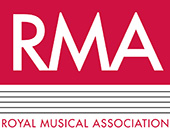
The second edition of ‘Early Recordings’ conference, focusing on ‘Methodologies in Research and Practice’, happened online (due to the Covid-19 travel restrictions). It took place on the 10th and 11th of July 2020 and gathered around 130 international delegates. The conference was organised around four thematic sessions, and a number of short research-in-progress presentations, called ‘research snapshots’.
The main themes were: 1) collections and their preservation; 2) recording industry and music market histories; 3) recording analysis; and 4) historically informed performance practice and early sound recordings. Even though the habitual face-to-face contact cannot be replaced by online interactions, the conference chairs and organisers (Eva Moreda Rodríguez from Glasgow University and Inja Stanović from Huddersfield University) created a friendly yet professional atmosphere that allowed meaningful debates after each presentation, accompanied by both public and private conversations in the comments section which were particularly lively.
The conference brought new insights into one of the field’s fundamental questions, namely: what is the relationship between the recorded sound and the live performance of the time? Karin Martensen (Technische Universität Berlin) stressed a dominant role of recording companies in the sound capturing process, such as the search for a specific type of voice and performance style, discouraging ‘stage presence’. Anne Kauppala (Sibelius Academy) quoted a touching testimony of the singer Aino Ackté on the struggles she experienced during the recording sessions and the challenges of the imposed routine. Yet another remarkable element to this puzzle was brought up by Massimo Zicari (Conservatorio della Svizzera italiana). Contrary to what we could imagine about the improvisatory character of the bel canto singers’ cadenzas, they were in fact often repeated in the same manner, according to the recorded evidence from different sessions as well as transcripts about live performances of the time.
In addition to this invaluable discussion, the conference focused on methodologies for early recordings’ analysis with regard to specific instruments. Johannes Gebauer (Bern University of Arts) presented, for instance, a methodology for studying violin fingerings, which combines attentive listening, spectrogram representation analyses, technical violinistic considerations and written evidence. An innovative use of conservatory archives, aiming to address some issues of recordings’ analyses, was proposed by Vincent Andrieux (Sorbonne) in his study of French Wind School. This, and similar studies often conducted by researcher-performers, allows for a greater understanding of historical practices through a meticulous analysis of recorded material. It also provokes a reflection on possible implications of the findings for the performance practice today. Two pianists, Laura Granero (Schola Cantorum Basiliensis) and Sebastian Bausch (Bern University of Arts), complemented their presentations withrecordings of their own research-enriched performances.
This conference highlighted important issues in the study of early recordings, and offered a wide forum for exchanging ideas between specialists encountering similar struggles. This platform has been developed as a part of the Rethinking Early Recordings project by Eva Moreda Rodríguez (University of Glasgow) and Inja Stanović (University of Huddersfield). Most papers are available at https://early-recordings.com/programme/ including the short research snapshots.
Joanna Staruch-Smolec is a FNRS research fellow and a PhD candidate at Université libre and Conservatoire royal of Brussels, focusing on Eugène Ysaÿe’s violin performance.
